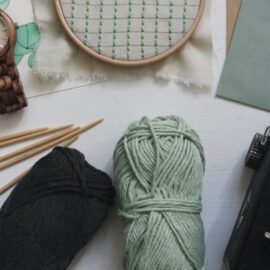

This article is an excerpt from the Shortform book guide to "Keep Going" by Austin Kleon. Shortform has the world's best summaries and analyses of books you should be reading.
Like this article? Sign up for a free trial here .
What are process goals? Why do process goals help stimulate creativity?
In Keep Going, artist Austin Kleon says that creative people benefit from creating process goals. While outcome goals make creating work a means to an end, process goals make creating work an exciting and joyful experience.
Check out how to pursue process goals to embrace your creative side.
Healthy Process-Based Goals
What are process goals? Unlike outcome goals (which focus on the result), process goals focus on the actual process and the things you enjoy about it. Process goals allow you to enjoy the work itself and avoid feeling pressured to complete it. This prevents you from having to go through the cynical disinterest of burnout or the anxiety and dread of feeling overwhelmed.
(Shortform note: While Kleon speaks mainly about the joy and excitement you might find in the pursuit of process-based goals, Mihaly Csikszentmihalyi (Flow) suggests that you can enjoy an activity in and of itself without experiencing pleasure or positive emotion from it. Instead, Csikszentmihalyi suggests that enjoyment of a process in itself is more of a sense of satisfaction from mastering a skill or completing a challenge—this suggests that even if you don’t experience joy or excitement at the moment, you can still find deep meaning and enjoyment from the process of being creative.)
To pursue healthier, process-based creative goals, Kleon suggests taking time to make art for yourself and for a loved one.
Make Art for Yourself
Make some creative work that’s just for you—this will help you enjoy the process of creation without having to worry about what anyone else thinks. You can store this work away somewhere, or even destroy it right after you finish making it. What matters is that you practiced creativity and took joy in that practice.
(Shortform note: The suggestion to create entirely for yourself touches on an aesthetic debate: Does a creative work need an audience to count as art? Some who answer “yes” argue that art by definition inspires emotion in those who see it—so if nobody else sees a creative work, it fails to meet the definition of art. On the other hand, some who answer “no” argue that what defines art is the intention of the artist—if they want it to be art, it is. This second definition suggests that even when you make something for yourself, it’s still art.)
Make Art for a Loved One
Make a piece of creative work as a gift for someone you love or care about. The positive feelings you have toward them will serve as motivation for your work. You’ll also share in the joy they feel when they receive your gift—this gives you concrete, positive reasons to continue making creative work.
(Shortform note: You might be confused by Kleon’s suggestion to make creative work into a gift, given that this is a goal based on producing a result (a gift to give) rather than the creative process itself. To clarify this confusion, think of Kleon’s recommendations as ways to inspire passion and joy in the making of your work—you’ll experience more of those positive emotions when you’re making it for someone you love.)

———End of Preview———
Like what you just read? Read the rest of the world's best book summary and analysis of Austin Kleon's "Keep Going" at Shortform .
Here's what you'll find in our full Keep Going summary :
- How to stay creative even when you feel stressed or burnt out
- Why the process of making art is more important than the outcome
- Why and how to make a creative space to work in






